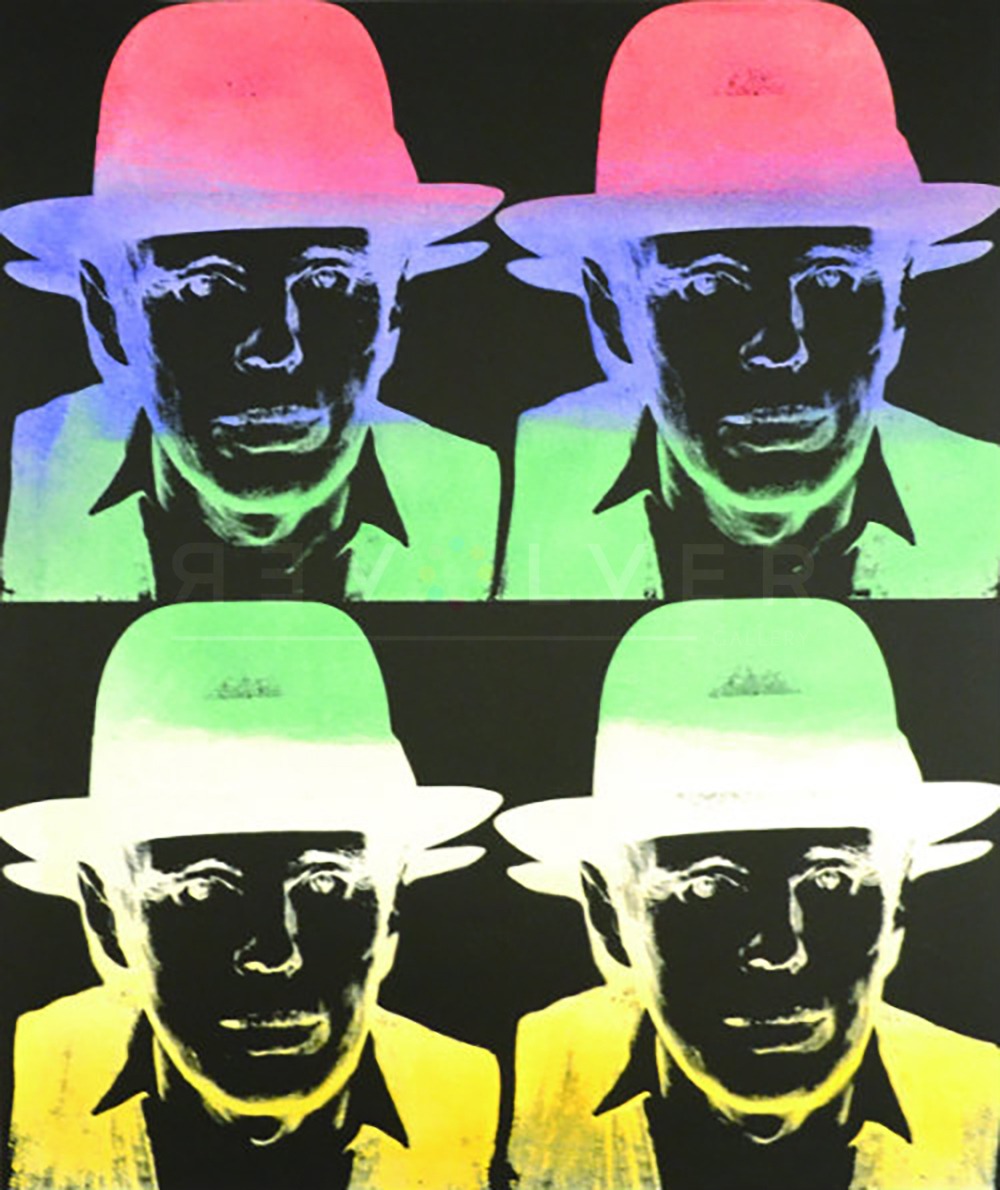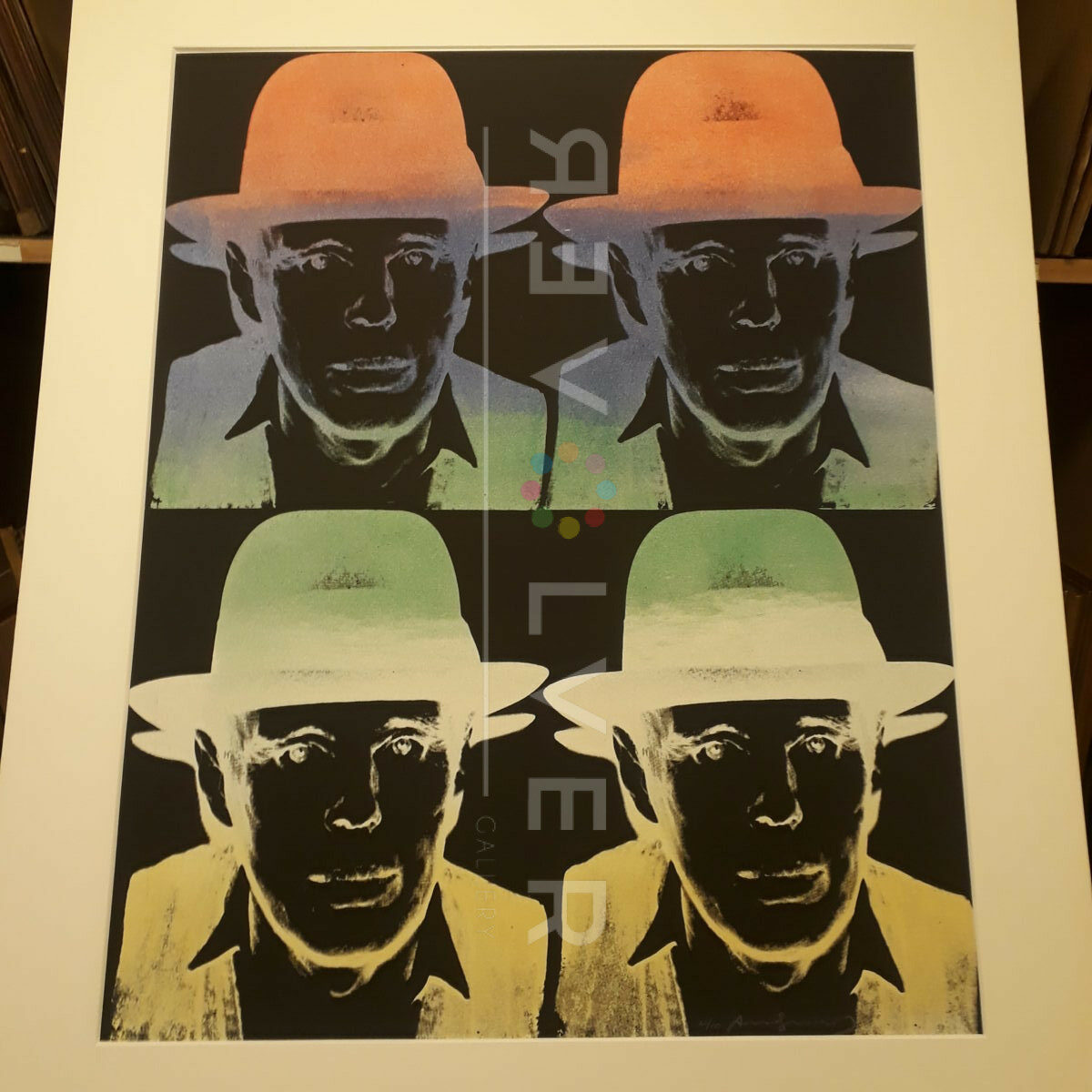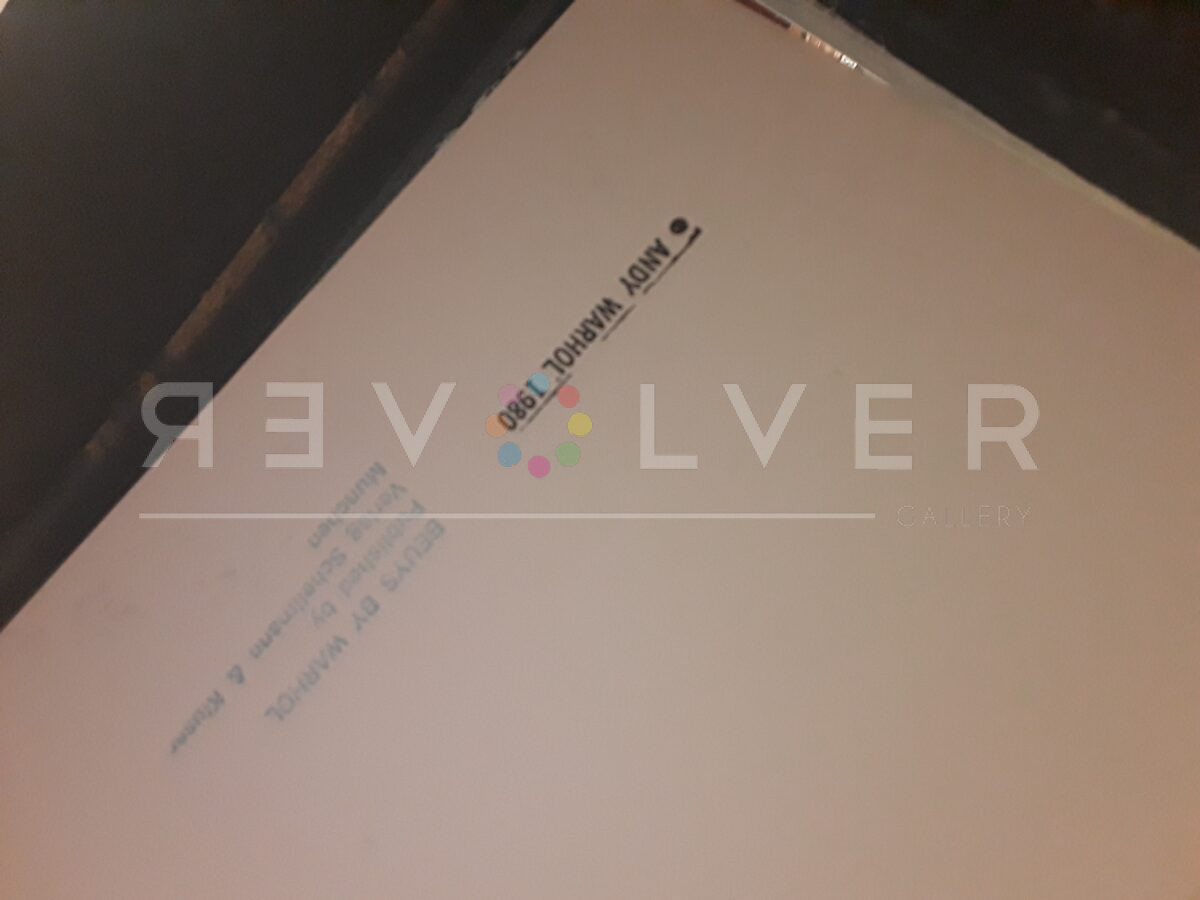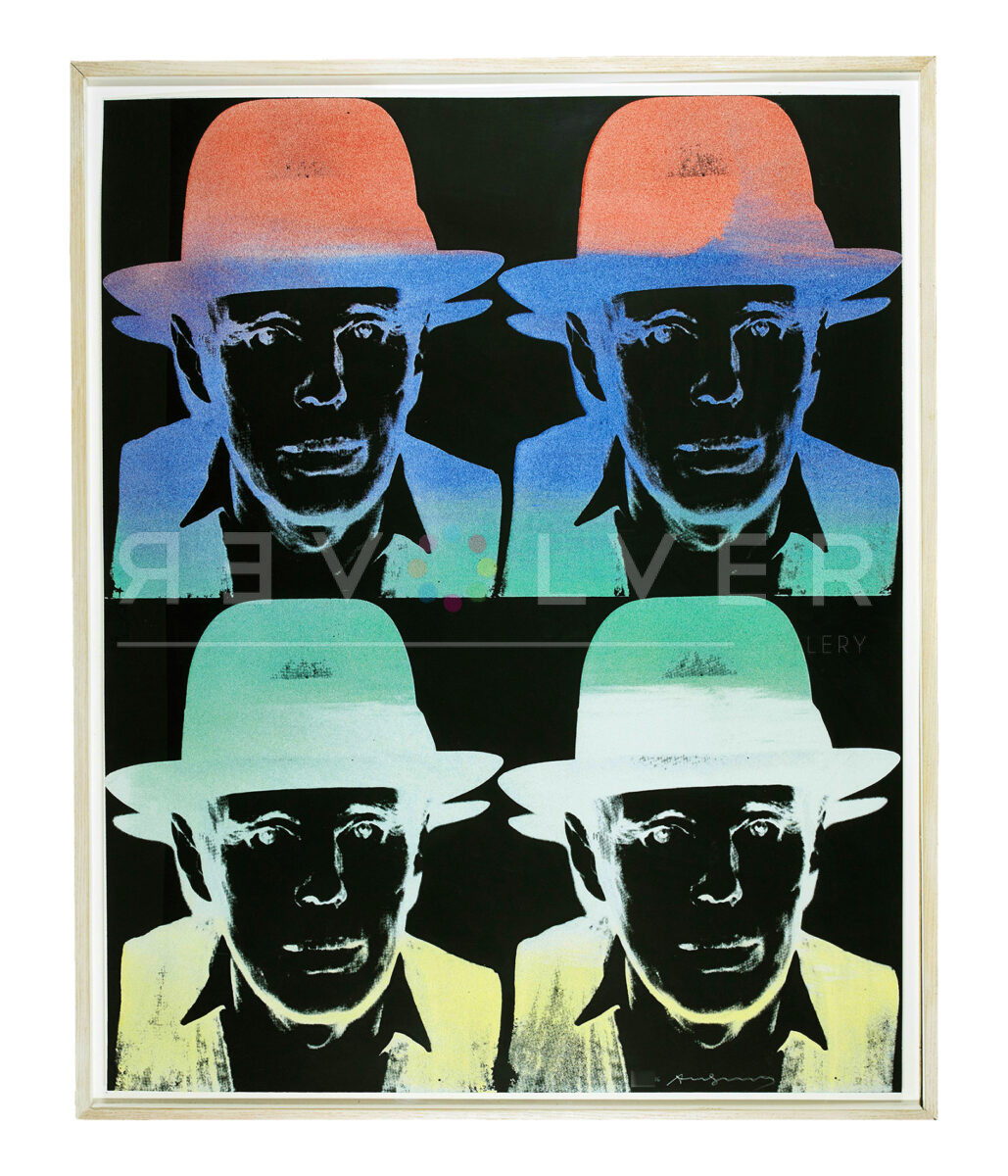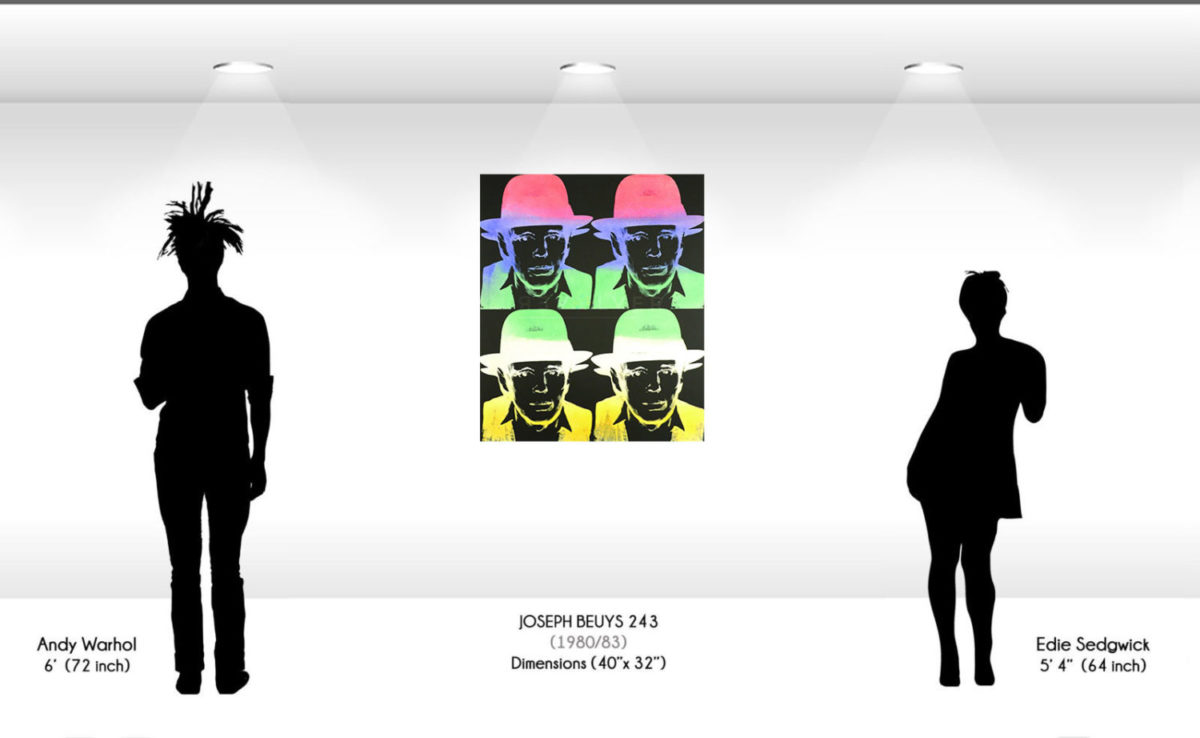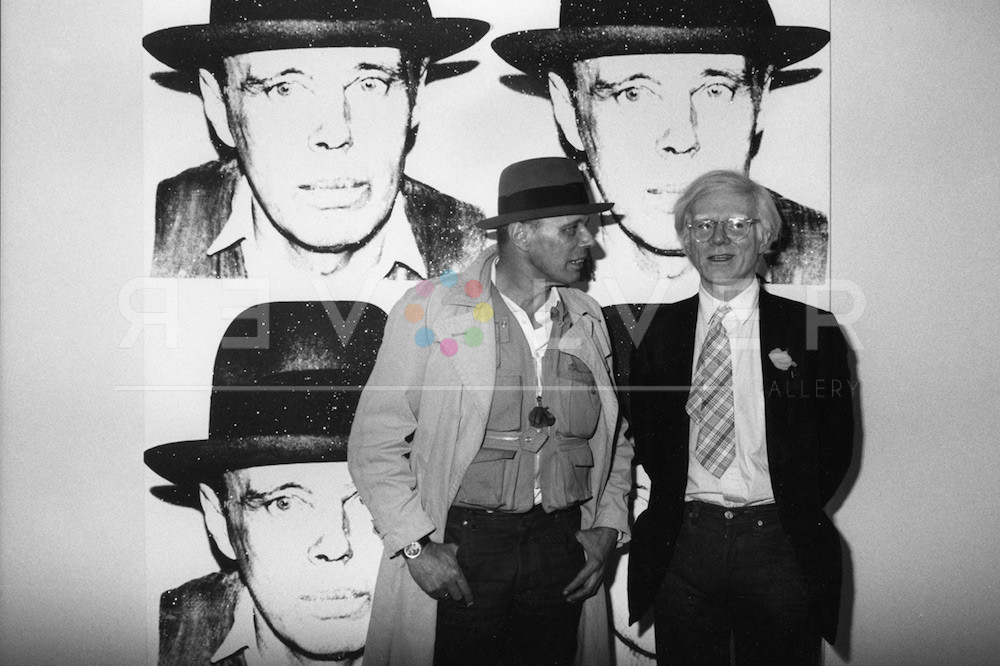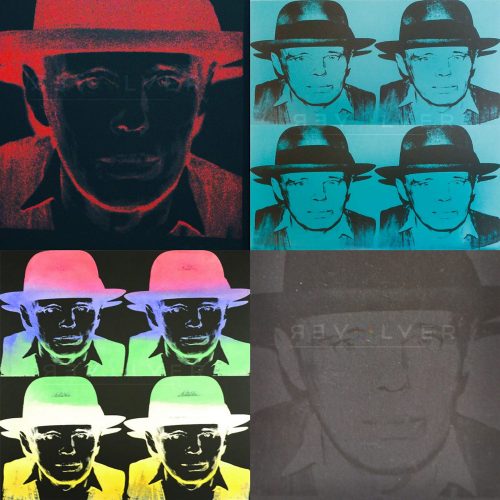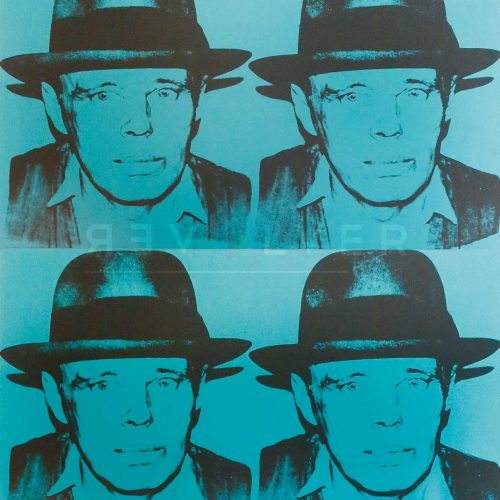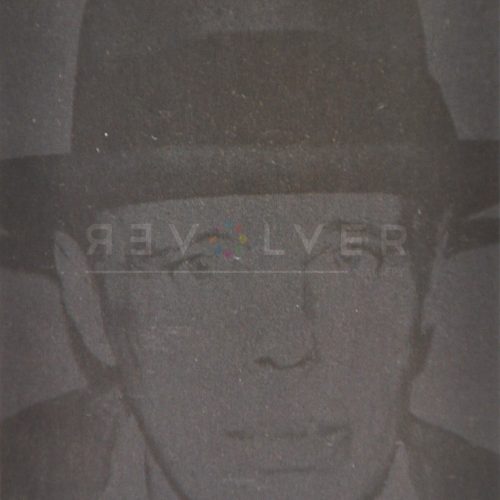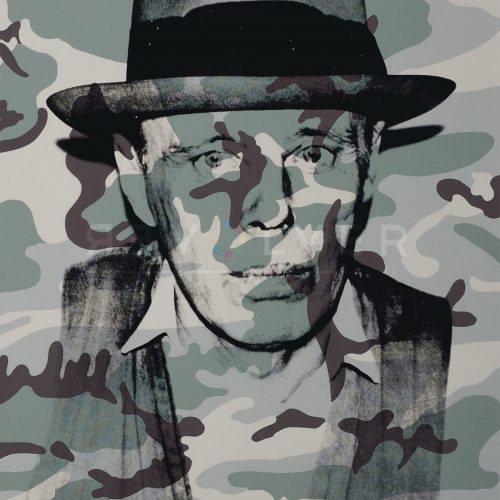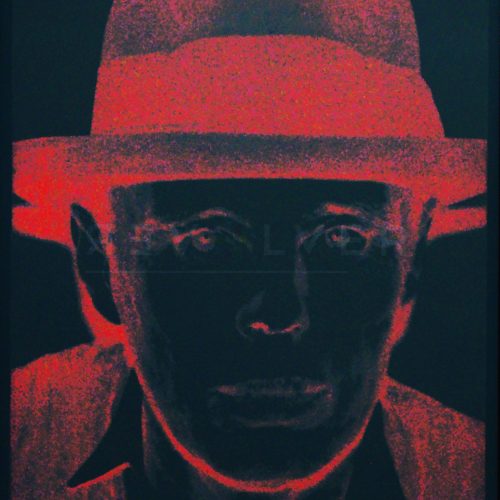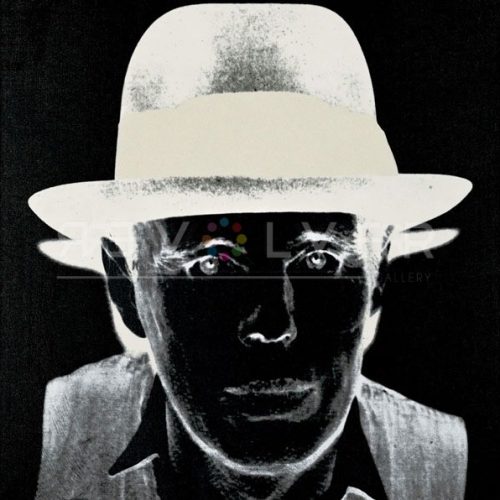Joseph Beuys 243 is a print by Andy Warhol, the second in the Joseph Beuys complete portfolio, depicting the renegade German art figure, Joseph Beuys. It was created in 1980, a time coinciding with a “late period” in both artists’ respective oeuvres. For Andy Warhol, it represents the constantly evolving style of the portrait work that was always a cornerstone of his artistic legacy. For Joseph Beuys, it points to possible greater reception on the international stage than he was accustomed to at the time. He was after all endorsed by Andy Warhol, the Prince of Pop, whose portraits endow a sense of prestige upon those depicted. What’s less clear is how Warhol’s portraits like Joseph Beuys 243 fit into the latter’s artistic framework.
Like Warhol, Beuys had made his life and persona a part of his greater creative project, crafting stories and a reputation to enhance his mystique and present himself as a mystic of sorts. Was his association with Warhol an artistic curveball to vex his critics, another attempt to mystify his intentions, or a tacit approval of Warhol’s approach? While Beuys made the proclamation that “everyone is an artist” and often skirted controversy due to his eschewing of more commonly accepted modes of art presentation, he just as often worked within those modes, not avoiding museums, gallery spaces, or academia. As such, Warhol’s Beuys portraits provide an extra wrinkle in how audiences and critics may regard both artists’ creative goals.
Joseph Beuys 243 itself is rather straightforward. Four screenprinted versions of Beuys sit on top of one another, providing the repetition associated with Warhol since the earliest days of his career. Interestingly, these screenprints are color inverted, looking like photo negatives and making Beuys image into a striking and surreal juxtaposition of black and white. Perhaps in doing so, Warhol plays with ideas of presence and absence, as Beuys was an artist whose work was sometimes impermanent and fleeting. Soft pastels are chosen to color the inverted portraits: pink, violet, green, and a vivid yellow.
Video: Joseph Beuys meets Andy Warhol (1979, Hans Mayer gallery in Dusseldorf).
Video: Joseph Beuys – How to Explain Pictures to a Dead Hair (1965, at the Galerie Schmela in Düsseldorf).
Photograph of Andy Warhol and Joseph Beuys courtesy of Schellmannart.com.

